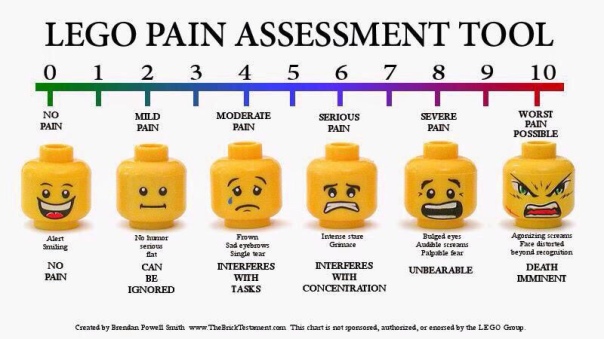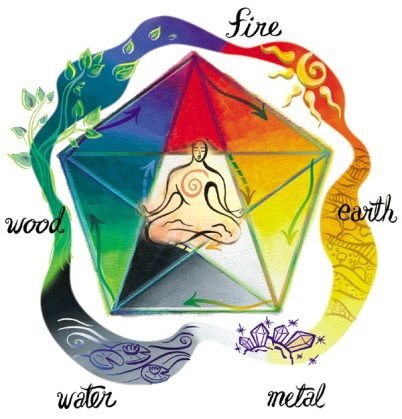What is pain to you? How do you experience pain? What does pain feel like? Where is your pain on a scale of 1-10. Almost every patient in the ER has been asked this, and questions like these can be very difficult for massage clients to answer during an interview.
Let’s face it, pain is subjective. Have you ever heard someone say ‘I have a high pain tolerance’? I hear it all the time in the treatment room and this can make it very difficult to gauge the client based on what level of pain they are experiencing.
Thankfully, there are pain scale’s out there to help client and therapist better communicate pain.
Some of my favorites are the funny meme pain scales with the Lego faces or the funny looking stick figures. They make me laugh, but when it comes to my client’s pain I’m not laughing and neither are they.

The most effective pain scale I like to use is one an instructor in massage school gave to me, and was very useful when working with my Case Study client called the Comparative Pain Scale. The scale is broken down so the client has context to which they can relate the experience they are having. For example: minor, moderate or severe pain if 1-10 is too broad. If numbers are easy for you then the descriptive word associated with a number is helpful ex. 3=tolerable, 6=intense or 9=unbearable. Further the scale lists descriptions you can compare you’re current experience to.
Understanding the client’s pain isn’t the only reason why therapists use a pain scale. As I was working with my case study client in research class, the number the client gave to me before and after the treatment was used as measurable data. Something that is very difficult to gather in massage therapy because so much is subjective. This information is very valuable down the road when I look back at your SOAP charts (a post about SOAP charting and why massage therapists chart will be linked here). It’s one of the ways we can track a client’s progress over time. So if I seem real pushy about where you are on the pain scale and insist a number, please remember it’s because achieving measurable results really matters to me.
The comparative pain scale is printed and laminated in my office for clients to use as a tool together in understanding pain, for specific techniques and has been proven useful in gaining results in my massage practice.
Alex Stenger is a licensed Massage Therapist practicing inside BalanceDiet Billings.
Website: billingsmassage.amtamembers.com
Contact: Office (406) 652-9142 Cell (406) 780-0535
Facebook: facebook.com/billingsmassage/


I actually really like this “lego pain scale.” I think it helps one better rate the pain they are in since it compares the pain level to “real life” discomfort (ie interfering with tasks). Thanks for sharing!
LikeLike
Hahaha those faces are right out of the Lego movie, but they are a good way to communicate your pain level!
LikeLike